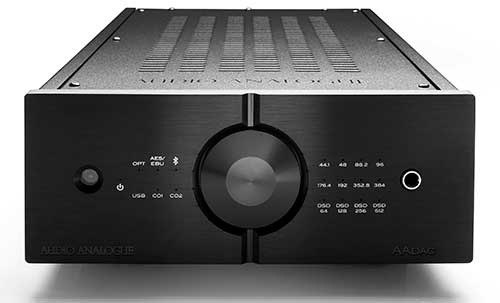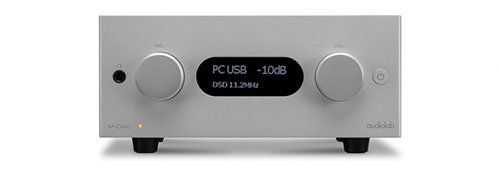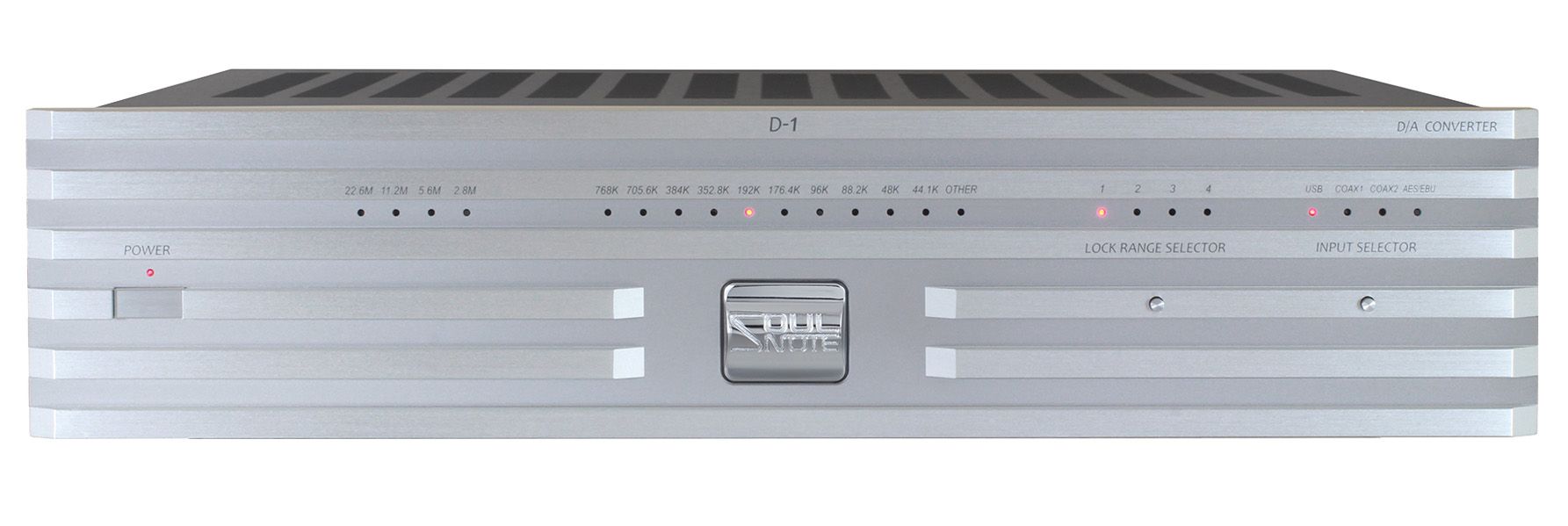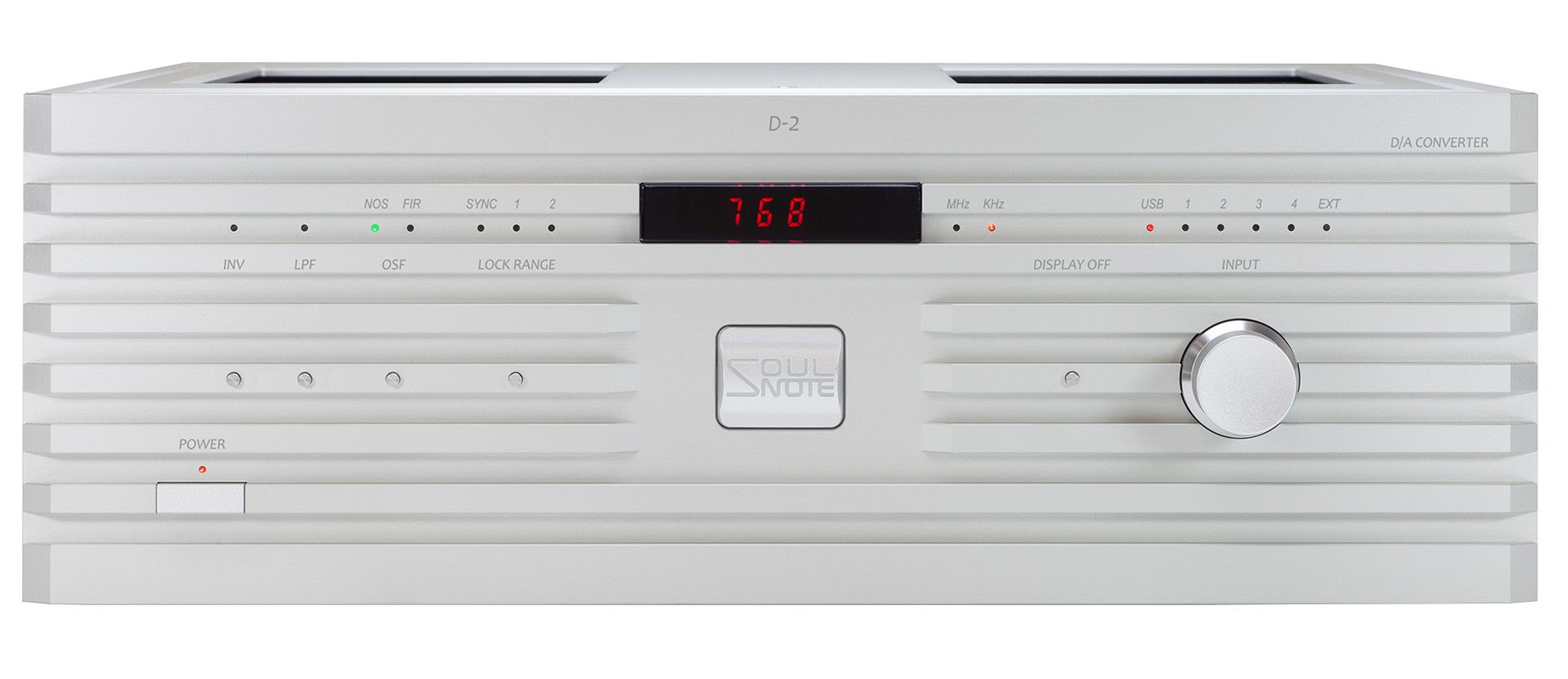Standalone DACs
One way to enhance your system to upgrade your digital conversion to current specifications is to add a stand-alone Digital to Analogue Converter (DAC). This can be used for multiple reasons including some, or all, of the following:
- Upgrading a CD player or CD transport
- Upgrading and/or enabling sound from a PC, laptop or streamer
- Upgrading sound from AV equipment or a games console
- Giving multiple additional digital inputs to any hi-fi system
- Pre-amp ability (with some models)
- Adding a high-quality headphone amplifier (with some models)
After long listening tests we have decided to stock the following units which we feel offer exceptional value and performance, for their price points:
Audio Analogue AADAC (DAC, Pre-Amp and Headphone Amplifier)
We have been enamoured with the fully balanced AADAC since it arrived. The sound quality of this unit is totally seductive offering a large and large soundstage, excellent image separation, fine detail and micro dynamics delivered with finesse. Bass is full bodied and extended, along with class leading dynamics and depth of image. The compact 22cm wide unit has been designed to match the style of the other Audio Analogue products and looks striking. A worthy partner with and CD transport but a natural partner for the AAdrive shown under the CD player part of this section.
Audio Analogue AA DAC in silver or black £4,500
I think the AAdrive and AAdac are both something of a high-end star combination, in the making. They deserve to be at the front end of some extremely high-grade audio.
It (Audio Analogue) can do to digital what it does so well to Analogue shouldn’t be a surprise. However, the fact it does it so well, making this one of the go-to front ends to beat at the price still comes of something of a surprise, in part because the AAdac, in particular, takes on an extremely contended market. And wins.
Finally, the AAdrive and AAdac combination taken together is worthy of note, as they represent one of the best ways of making a good sound from CD for the high-end enthusiast without £50k to burn.
- Alan Sircom Hifi+ March 2021
Audiolab M-DAC+ (DAC, Pre-Amp and Headphone Amplifier)
The M-DAC Plus is the evolution of the multi award winning M-DAC which took the world by storm. In our listening tests we found this to be a compelling listen at an attainable price. We compared this against DACs costing multiple times its price but the M-DAC Plus did not disappoint. It delivers a very credible holographic soundstage with natural tone offering outstanding value for money.
This is a small form factor unit only 29 cm wide making accommodation easy and provides many features.
Audiolab M-DAC+ in silver or black £800
Hegel D50 DAC
Hegel have introduced a stand-alone DAC to their portfolio, affectionately known as the Raven. This nickname comes from Norse folklore. As Hegel put it, In Norse mythology, the ravens Hugin and Munin brought Odin unparalleled insights, revealing the world's hidden truths. With their D50 DAC, Hegel is aiming to do the same with its musical insight.
The D50’s minimalist aesthetics match that of the Viking CD player, H600 and their reference Pre and Power combinations. The front facia is free from clutter, as the three control buttons are hidden underneath the centre of the front panel. The dimmable screen will display all relevant information. This makes for an easy companion to live with day to day.
This unit replaces Hegel’s HD-30 DAC which also incorporated a pre-amplifier. Hegel made a conscious decision to manufacture a more stripped back and focussed product this time. The goal was to maximise sonic performance, rather than greater functionality. For this reason, and the pre-amp functionality has been dropped, and the resultant sonic performance is in a different league altogether to the previous HD-30.
The D50 DAC is designed to be as low in distortion as possible. The chassis houses 2 shielded toroidal transformers. These two items are compartmentalised behind a steel shield to minimise any stray RFI noise. Of these transformers, one is used for the noisier digital functions and stand-by functionality, with the other being used for the more sensitive digital and analogue components. Their output is also filtered before entering the unit, further lowering noise.
Hegel have shown real attention to detail with this design, even down to the circuit board traces which are routed with curved corners to minimise impedance drops and reduce stray radiation.
The DAC chip itself, the ESS flagship 9039, is housed on a separate circuit board which is raised above the rest of the electronics further driving down noise and minimising signal path lengths. The resulting digital processing is very accurate and clean of unwanted digital artifacts.
DAC-Loop
While the D50 is an ideal match for Hegel’s reference separate components, Hegel has ensured that the D50 can also be seamlessly integrated with its higher-level streaming amplifiers using a connection it calls DAC-Loop.
The DAC-Loop which, when connected to Hegel’s top-level integrated amplifiers, allows the internally-streamed digital music to pass via the D50 DAC. The DAC-Loop utilises the digital output connection and menu functions of the amplifiers to pass the internally-streamed digital music to the D50 DAC. By utilising the latest Hegel DAC technology, this upgrades the in-built streamer, along with all other digital inputs, resulting in a superior sound quality. Essentially future-proofing the amplifier.
This DAC-Loop feature is available in the current H400 and H600 amplifiers but was also built into previous Hegel amplifier models, such as H300, H360, H390 and H590, allowing owners of these amplifiers to benefit from the latest Hegel DAC technology.
In our listening tests we found this to be a very dimensional performer with wide and deep soundstage. Due to the low noise floor, the sound it creates is textured and revealing of fine detail information. It still has the Hegel sonic signature, marginally on the warm side of neutral, with a smooth and refined high frequency performance. Highs are handled with real delicacy, whilst lows are delivered with real impact and definition. Even compared with the already excellent DAC in the H600, this is a step up in performance in every way, painting a much larger sonic image. It has a rich character. Vocals are particularly well rendered, with the emotion being clearly portrayed.
Available for an in-studio presentation, or home trial by appointment.
Hegel D50 DAC £4,250
Soulnote Audio DACs
Soulnote is a high-end audio brand from CSR Inc., founded in 2004 by the former members of Marantz Japan bringing much in-house expertise. Soulnote's headquartered are in Kanagawa, Japan.
Hideki Kato, Soulnote’s ‘Chief Sound Manager’ since 2016, has been working in high-end audio since late 1980s, having been deeply involved in the development of the legendary products from NEC and Philips.
Products
All of the Soulnote’s series of products share a very similar chassis design and size within each range for a very cohesive system look. All components are available in silver or back anodised aluminium.
Soulnote Series 1 components have a thick, milled front panels but conventional basic chassis to the top, bottom and rear.
Soulnote Series 2 units are built from milled aluminium panels on all sides, as well an introduction to their floating chassis technology.
Soulnote Series 3 units are built with absolutely no compromise. As well as milled panels, it incorporates all of their floating-chassis technology: top and bottom panels, along with the input and output sockets.
We first evaluated the D2 DAC and were very impressed. It has a sound field bristling with information but is not bright at all. No high end harshness that is often the case with many current DAC designs. Bass is deep, taught and textured, a similar trait to their amplifiers. It conjures a realistic, large, 3-D sound field with natural timbres.
There is also a choice of NOS (non-oversampling) mode which bypasses a lot of the processing required for traditional oversampling mode, as is used in most DAC designs, as these require additional reconstruction filters and processing which can downgrade sound quality. The DAC also has filter options too allowing the owner the choice.
Soulnote D-1N DAC £5,400
Read more about Soulnote D-1N DAC
Soulnote D-2 DAC £7,700
Read more about Soulnote D-2 DAC










